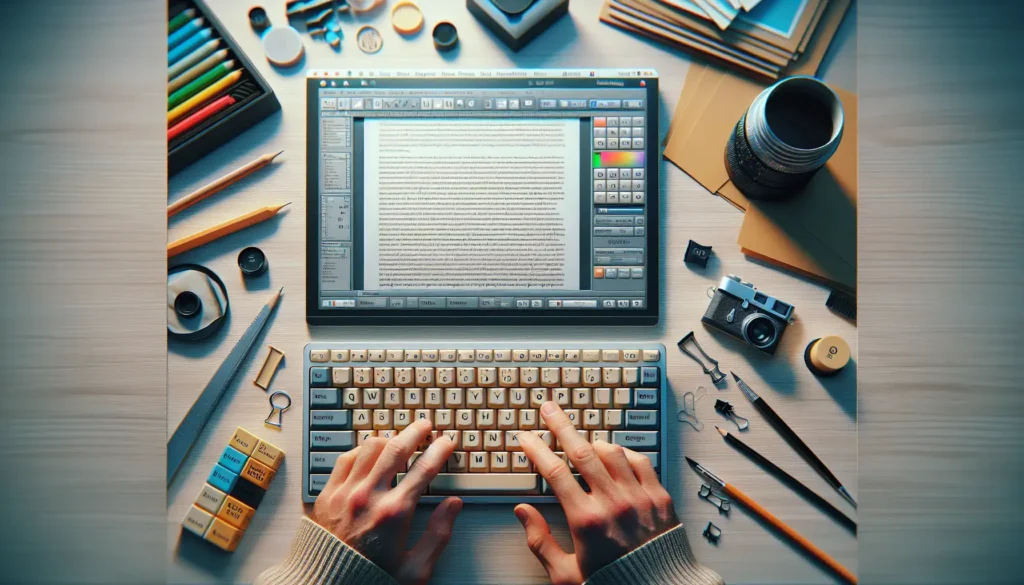Microsoft Word 2007 is a powerful word processing software that makes creating professional documents easy. Whether you’re new to Word or upgrading from an older version, there are some basic things you’ll need to know.
Opening Microsoft Word
To open Word 2007 on your Windows PC, go to the Start menu and select Microsoft Word from the list of programs. If you don’t see it there, you can search for “Word” using the search bar.
When Word opens, you’ll see a blank document ready for typing. Across the top is the Ribbon – this replaces the old menu system from previous versions of Word. The Ribbon organizes all the commands into tabs that group related features.
Understanding the Word 2007 Interface
The Word 2007 interface has a few key components you should be familiar with:
- The Ribbon – Contains tabs and command groups to access different features
- Quick Access Toolbar – Common commands like Save and Undo/Redo
- Title Bar – Displays the file name and Word buttons for controlling the window
- Ruler – Helps align text and objects like images
- Status Bar – Shows word count and other information about the document
- View buttons – Switch between different ways of viewing the document
Spending some time clicking around and understanding where to find key tools will make you much more efficient using Word 2007.
Basic Word Processing Tasks
Now let’s go over some of the basic word processing tasks you’ll use frequently:
Typing and Editing Text
Simply click inside the document and start typing to add text. To edit, click and drag to highlight text or place the cursor in the middle of a word. Then make changes by typing new text.
Use the Delete and Backspace keys to remove text on the left or right side of the cursor.
Saving Documents
Click the Office Button (top left) and select Save or Save As to save your document. Give the file a descriptive name and choose a location on your computer or network drive.
To save again, you can just click the Save button on the Quick Access Toolbar.
Copying, Pasting, and Moving Text
To copy or cut text, first select it then go to the Home tab and click Copy or Cut. Move the cursor to a new location and click Paste. You can also use the keyboard shortcuts Ctrl + C, Ctrl + X, and Ctrl + V.
Checking Spelling and Grammar
Go to the Review tab and click Spelling & Grammar to run the spell checker. Word will highlight any errors or suggestions. Right-click misspelled words to see suggestions and make corrections.
Formatting Text
Word 2007 has many formatting options that let you customize the look of your documents:
Changing Fonts
Select the Home tab to access common formatting commands like font, font size, bold, italic, underline, font color, and more. Make selections first before applying formatting.
Aligning Text
Choose left align, center align, or right align on the Home tab to change how text sits on the page. Justified aligns along both the left and right margins.
Lists and Line Spacing
Click the bullets, numbers, or multilevel list buttons to create lists. Use line spacing options like 1.5 lines or double space found under the Home tab’s paragraph group.
Spending some time exploring all the text formatting options will help you master Word 2007 quickly!
Inserting Objects
To spice up your Word documents, insert things like:
Images and Clip Art
Go to the Insert tab and select Picture or Clip Art to add visual elements. Resize and position images by dragging the corners and edges.
Shapes and Text Boxes
Use Shapes and Text Boxes to highlight information or call out text. Access them on the Insert tab.
Tables
Also on the Insert tab, you can insert tables to organize text in rows and columns, much like a spreadsheet. Customize and format them to fit your needs.
Conclusion
Learning how to use Microsoft Word 2007 well takes time, but mastering the basics opens up many possibilities for creating professional documents of all kinds.
Use the formatting options to make text visually appealing and easy to read. Insert objects like images and tables to enhance the content.
Don’t be afraid to explore – Word’s Ribbon interface makes features easy to locate. And the handy help system can teach you new techniques as you go.
With practice, Microsoft Word 2007 will become a useful and powerful tool for all your document needs.





